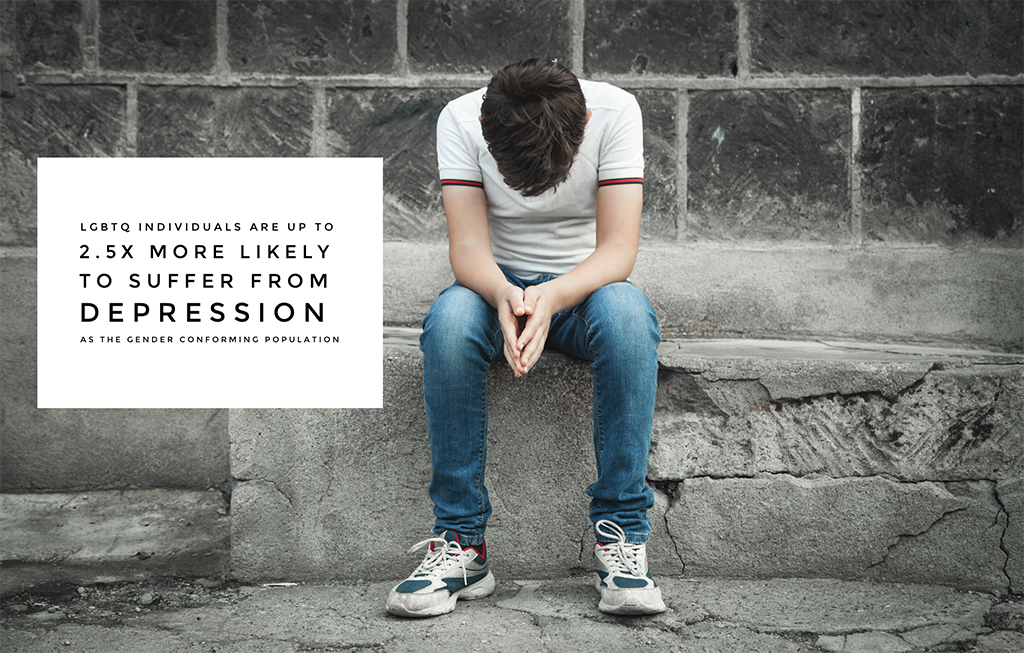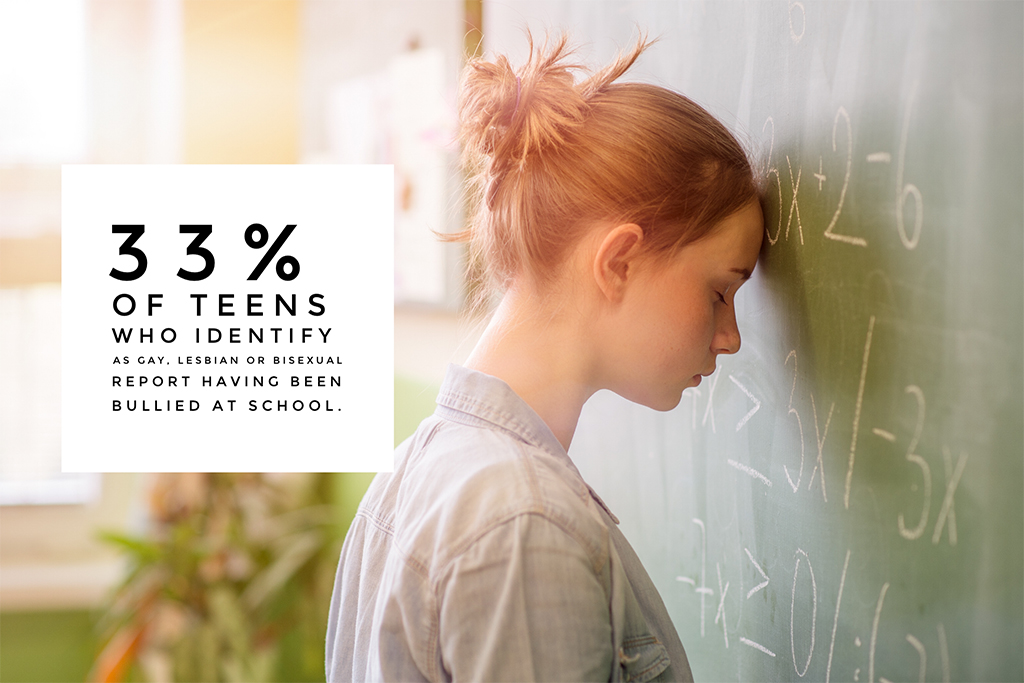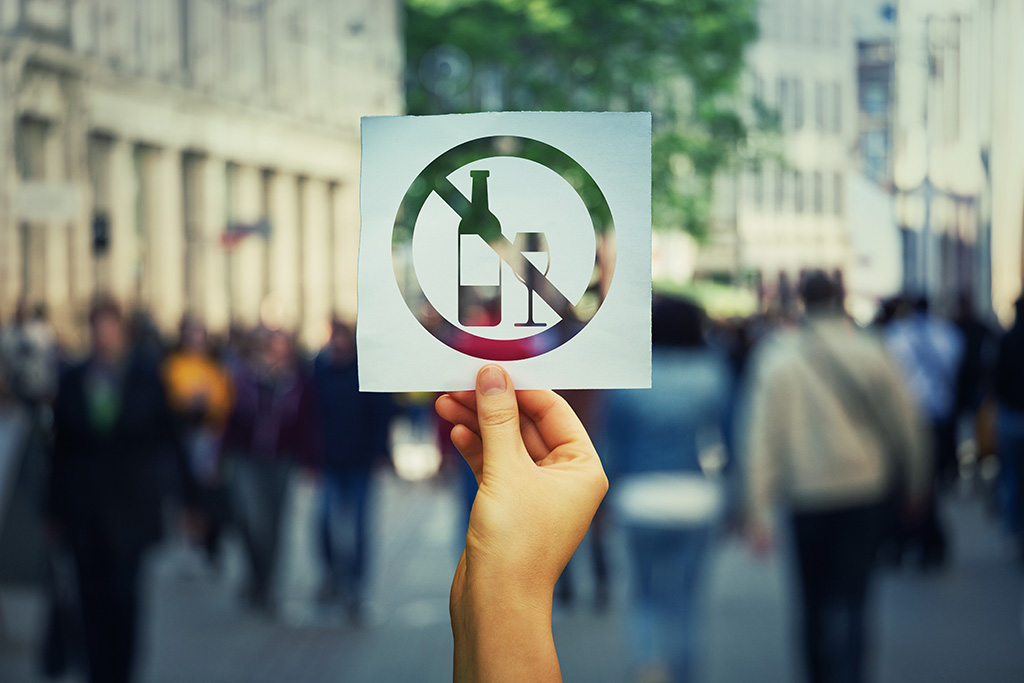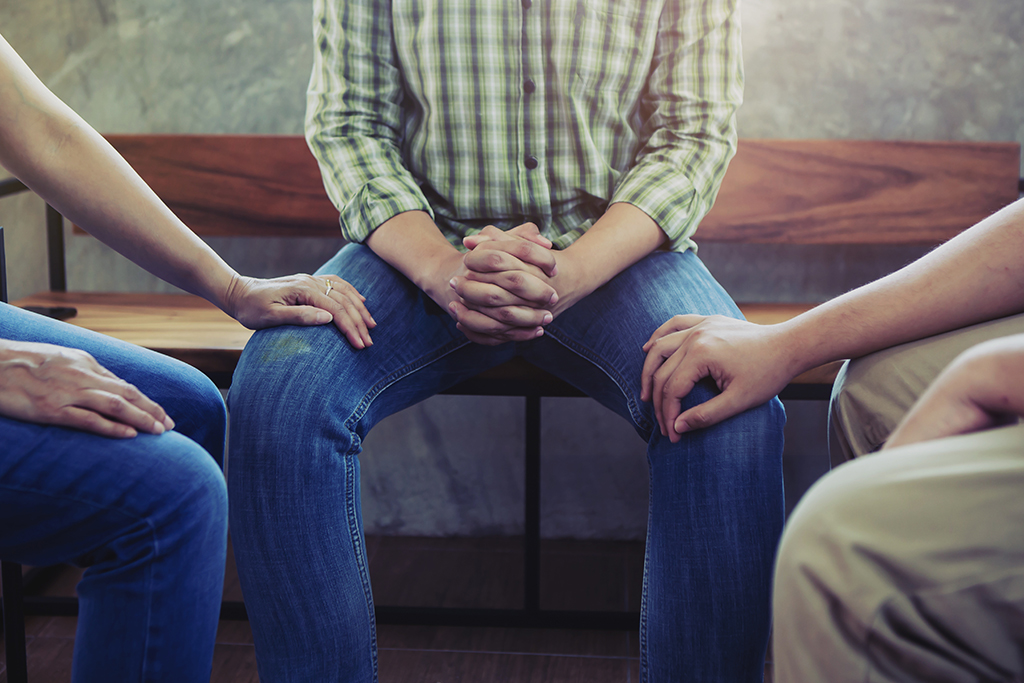Reviewed By:
Individuals who identify as lesbian, gay, bisexual and transgender are more vulnerable to bullying, harassment, violence, and rejection than the general population, making them more susceptible to drug and alcohol abuse. Supporting loved ones starts with empathy and understanding. Use this guide to find helpful facts and resources.
Table Of Contents
- What It Means to Be LGBTQ+
- Why the LGBTQ+ Community Is at Higher Risk for Addiction
- The LGBTQ+ Community, Minority Stress, and Depression
- Common Addictions in the LGBTQ+ Community
- Risks for LGBTQ+ Teens and College Students
- Supporting LGBTQ+ Youth at School
- How to Support an LGBTQ+ Friend
- How to Support Your LGBTQ+ Child: A Word To Parents
- Treatment for Drug and Alcohol Addiction
- Specialized Treatment for LGBTQ+ Clients
What It Means to Be LGBTQ
The LGBTQ+ community encompasses a diverse group of people whose sexualities or gender identities fall outside cultural norms. Although the acronym refers to people who identify as Lesbian, Gay, Bisexual, Transgender and Queer or Questioning their sexuality, many people do not fit neatly into a single category — and others do not feel adequately described by these designations.
The acronym LGBTQIA+ is sometimes used to include intersex and asexual individuals, but even this expansion does not cover the spectrum of identities represented. The “+” has therefore become a catch-all for anyone who is not heteronormative. It also symbolizes the spirit of inclusiveness and acceptance that has come to define the LGBTQ+ community. (The terms LGBTQ or simply LGBT often refer to the broader community.)
Unfortunately, many LGBTQ+ individuals still struggle to find acceptance at home and in social settings, even as mainstream culture has evolved to become more protective of LGBTQ+ rights. Despite embracing LBGTQ+ entertainers, fighting for marriage equality, and vocally supporting LGBTQ+ causes, some people still struggle to accept LGBTQ+ family members. In certain religious communities, LGBTQ+ individuals still face scrutiny or judgement. Many still face a lack of empathy or understanding from peers.
The struggle to feel understood and the right to simply be themselves has put members of the LGBTQ+ community at greater risk for drug and alcohol addiction than the general population. This guide offers ways to show support for friends and family in the LGBTQ+ community.
Why the LGBTQ+ Community Is at Higher Risk for Addiction
Multiple studies from the National Institute of Health, the National Institute of Mental Health and other research groups show that the LGBTQ+ community is at a substantially higher risk for addiction than others. The reasons range are many. Issues of family rejection are a big factor. Other components include a lack of social support, cultural stigma, bullying, and other forms of harassment.
Family rejection has a particularly powerful impact. Research has found that higher levels of family rejection during one’s adolescence are significantly associated with poorer health and addictive behaviors in years to come. When members of the LGBTQ+ community come out to their parents, they not only risk avoidance or rejection, but in some cases shaming and abuse.
In communities where LGBTQ+ identities are not accepted, coming out can mean judgement, shunning, or even verbal and physical abuse. Feelings of rejection can lead to a search for escape, resulting in drug or alcohol abuse as a means of self-medication.
LGBTQ Addiction Statistics
As many as 60% of LGBTQ people will suffer from anxiety and depression at some point in their lives, about twice that of the general population. – AARD
Roughly 30% of LGBTQ kids report having been bullied or cyberbullied at school; 10% report not wanting to attend school because of bullying or harassment. – StopBullying.gov
40% of people who identify as lesbian, gay or bisexual (LGB) report having used illicit drugs, compared to 17% of people in the sexual majority. – SAMHSA
The odds for substance abuse among LGBTQ youth are 190% higher than for heterosexual youth. – NIH
Have questions about addiction?
Call us at 855-430-9426 to speak with a recovery specialist.
The LGBTQ+ Community, Minority Stress, and Depression
The LGBTQ+ community is also at risk for higher rates of stress and depression. In response to negative messaging about what it means to be attracted to people of the same sex, LGBTQ+ people often see themselves as deeply flawed, unlovable, unworthy, ugly, and hopeless.
Psychologists refer to this process of dealing with persistent prejudice and discrimination as minority stress. Many studies have shown that it has powerful, lasting, and negative impacts on the mental health and well-being of the LGBTQ+ community. Such stress often creates situations whose consequences lead to anxiety and depression, often leading to substance abuse.
In addition, LGBTQ+ people also suffer from body image issues and eating disorders at disproportionate rates. Body dysmorphic disorder, in particular, impacts gay men at a rate much higher than their sexual majority counterparts. A recent National Institute Of Mental Health study indicated that higher levels of body dissatisfaction are associated with increased depressive symptoms and sexual anxiety, and represents a serious risk factor to the psychological well-being of sexual minority men.
The LGBTQ+ Community and Mental Illness
Lesbian, gay and bisexual adults are more likely than their sexual majority counterparts to experience mental illness in addition to addictive behavior, according to a report from the Department of Health’s Substance Abuse and Mental Health Services Administration (SAMHSA). The Anxiety and Depression Association of America reports that LGBTQ+ individuals are between 1.5 and 2.5 times as likely to suffer from depression as gender-conforming individuals.
Meanwhile, people who identify as lesbian, gay or bisexual (LGB) report more than twice the drug use of those who identify as in the sexual majority. LGBTQ+ adults also reported higher rates of drinking and cigarette use. They are also more likely to have experienced mental illness as they face the stress of rejection from family, friends and church communities.
Individuals who choose to avoid rejection in favor of secrecy face a different battle with mental illness. Keeping one’s sexuality a secret can be a major psychosocial challenge that can lead to mental health issues based on anxiety and fear.

Common Addictions in the LGBTQ+ Community
According to the National Survey on Drug Use and Health, LGBTQ+ men and women across all age ranges were more likely to have misused prescription pain relievers in the last year than heterosexual adults. They also faced triple the risk of opioid use disorder. While many substances can be addictive, five are most commonly abused within the LGBTQ community:
Tobacco: Gay and transgender individuals use tobacco up to 200 percent more than those who identify as heterosexual.
Alcohol: Between 20 and 25 percent of the LGBTQ community have moderate to severe alcohol dependency.
Marijuana: Gay men are 3.5 times more likely to use marijuana than straight males.
Amphetamines: Members of the LGBTQ community are 12.2 times more likely to use amphetamines.
Heroin: LGBTQ individuals are 9.5 times more likely to use heroin than heterosexual individuals.
Risks for LGBTQ+ Teens and College Students
Adolescence brings strong emotions. It can also bring confusion about one’s sexuality or gender identity. Because of this, LGBTQ+ teens are particularly vulnerable to mental health issues and substance abuse. According to a recent NIH study, LGBTQ+ youth are 190% more likely to struggle with substance abuse than heterosexual youth. The numbers are even higher within specific designations: 340% for bisexual youth and 400% for females. The adolescent brain is still maturing, making teens particularly vulnerable to the effects of drugs.
LGBTQ+ teens are also twice as likely to be bullied, according to a report by the Human Rights Campaign Foundation. The group also found that LGBTQ+ teens are 40% less likely to have familial support. It is important for teens to understand that being part of the LGBTQ+ community does not cause substance abuse issues. Rather, the social challenges and abuse they often face, combined with a lack of support from family members and trusted adults, can lead to drug and alcohol use as a means of coping.
Supporting LGBTQ+ Youth at School
A positive school climate and plays an important role in promoting the well-being of LGBTQ+ teens and other youth. A national survey of LGBTQ+ youth suggests that gay-straight alliances, such as the GSA Network, LGBTQ-inclusive curriculum, supportive staff, and comprehensive anti-bullying policies can promote positive school climates for LGBTQ+ youth. Government research shows that LGBTQ+ youth in schools that prioritize a safe, supportive learning environment were more likely to feel connected to their schools and were less likely to feel unsafe, among other positive outcomes.
Positive school climates significantly reduce suicidal ideation among sexual minority youth, and research suggests that the mere presence of a gay-straight alliance (GSA) has strong links with the well-being of LGBTQ+ youth when they enter early adulthood. In fact, the presence of a GSA is associated with positive health outcomes for all students, LGBTQ+ or otherwise. Having bullying prevention policies that are inclusive of sexual orientation has also been associated with reduced prevalence of suicide attempts among sexual minority youth.

How to Support an LGBTQ+ Friend
Support from family and friends promotes the healthy development of all youth, regardless of sexual orientation or gender identity. But for LGBTQ+ youth, who are more likely to feel marginalized, rejected or threatened, this support is critical to their long-term safety and well being.
A recent survey of 10,000 self-identified LGBTQ+ youth conducted by the Human Rights Campaign found that family acceptance has a positive association for self-esteem and general health. For sexual minority youth, family and friend support also promotes mental health and well-being and protects against psychological distress and depression. Family support also protects against thoughts of and attempts of suicide, substance abuse, and STDs. Although peer support has a strong impact across all ages, research shows that family support may have the strongest impact among younger youth.
There are many ways to support an LGBTQ+ loved one. You can participate in Pride Month activities. Patron businesses owned by members of the LGBTQ+ community. Read books by LGBTQ+ authors.
How to Support Your LGBTQ+ Child: A Word To Parents
Parents of LGBTQ+ individuals, regardless of their children’s age, are in a unique position. They can prevent drug and alcohol abuse by fostering a strong sense of belonging and self-worth. Here are three specific ways to offer support:
Let your children know they are loved
For many LGBTQ youth (and adults), breaking the news to mom and dad is the scariest part of coming out. Parents don’t need to be an expert in all things LGBTQ to let their kids know they care. Even if you’re not sure what to say, something as simple as, “I’m here for you. I love you, and I will support you no matter what” can mean more to your child than anything else.
Encourage dialogue
Be curious about your child’s life. Get to know their friends and what they like to do. Ask them how their day went and if they learned anything interesting in school. If it’s like pulling teeth at times, don’t be discouraged. Young adults really do want to talk to share, even if they struggle to express their feelings.
Staying connected to your child’s world makes it easier for them to approach you with their sexuality or gender identity. The more you communicate, the more comfortable they’ll feel.
Accept your children as they are
If your child comes out as LGBTQ+, accept their identity wholeheartedly. However prepared you may feel or not, parental acceptance is crucial to the child’s present and future health and safety.
Young people with high levels of family rejection are:
- eight times more likely to report having attempted suicide
- nearly six times more likely to report high levels of depression
- more than three times more likely to use drugs or have unprotected sex.
Need to talk to someone today?
Call us at 855-430-9426 to speak with a recovery specialist.
Examples of Parental Acceptance Behaviors
The following are a few ways to help your LGBTQ+ child (or adult) feel safe and accepted:
- asking them about their experience and how you can help them feel supported
- listening without interrupting or arguing
- telling them you love them and express affection
- learning together about issues faced within the LGBTQ+ community
- joining an LGBTQ family support organization, such as PFLAG, Gender Spectrum, Gender Odyssey, or Strong Family Alliance
- standing up for your child when they are mistreated, even by other family members
- helping your child find an LGBTQ+ role model
- talking to your religious leaders about helping your place of worship become more supportive of LGBTQ+ people, or finding a more supportive place of worship through gaychurch.org, Q Christian Fellowship, Keshet, or Muslims for Progressive Values
- encouraging family and friends to check in with your child and show support
- challenging homophobic comments
- getting to know your child’s LGBTQ friends and romantic partner
- support your child’s gender expression
Treatment for Drug and Alcohol Addiction
LGBTQ+ individuals who develop a dependence on drugs or alcohol have the greatest chance of lifelong recovery at a professional treatment center that takes a fluent approach to recovery. A fluent process focuses on every phase of recovery, from detox to aftercare. Because members of the LGBTQ+ community are susceptible to secondary mental health issues such as depression and anxiety, it is also important to find a facility certified to treat co-occurring disorders.
Sprout Health Group provides a safe, nurturing environment with customized treatment through every phase of recovery. Flexible options allow clients to choose from inpatient or outpatient programs, both offering a high level of intensive care. All clients receive education specific to their addiction, counseling, and resources to continue recovery beyond their stay. Those who need detox receive 24-7 medical attention with experienced staff.
Specialized Treatment for LGBTQ+ Clients
Government studies have shown that sexual minority and gender non-conforming clients benefit from LGBTQ-specific services at addiction treatment centers — yet just 7.4% of facilities offer them. At Sprout Health Group, we are proud to offer LGBTQ services that help clients feel safe, nurtured and supported in their recovery. Clients can join a weekly group open to anyone in the LGBTQ+ community, including allies and loved ones. We arrange 12-step meetings that are supportive of, or exclusively for, the LGBTQ population. We also respect and support each client’s gender identity throughout every step of the treatment process.
Have questions about addiction?Chat with one of our recovery specialists now.


